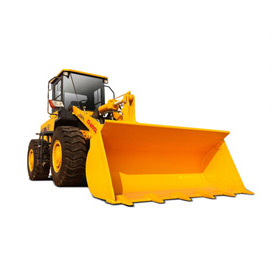Vertical Flame Testing Apparatus for Cable Safety and Performance Evaluation
Understanding the Cable Vertical Flame Test Machine Importance and Functionality
In today's fast-paced technological world, ensuring the safety and reliability of electrical and communication systems is paramount. One of the critical aspects of this safety evaluation is the flame resistance of cables, especially those used in buildings and critical infrastructure. This is where the Cable Vertical Flame Test Machine comes into play.
What is a Cable Vertical Flame Test Machine?
The Cable Vertical Flame Test Machine is a specialized device designed to evaluate the flammability characteristics of electrical cables when subjected to an open flame. According to various international standards, such as IEC 60332-1 and UL 1581, it simulates real-world conditions under which a fire might occur in environments where cables are installed.
The testing process involves exposing a sample of the cable to a flame under controlled conditions, typically in a vertical orientation. The test measures several key parameters the flame spread along the cable, the time it takes for the flame to extinguish once the ignition source is removed, and the amount of smoke produced during the burning process. Collectively, these factors provide critical insights into the cable's performance in fire situations, helping manufacturers and regulators assess compliance with safety standards.
Importance of Flame Testing
Flame testing of cables is essential for various reasons. Firstly, cables are often the lifeline of buildings, powering essential services such as lighting, HVAC systems, and emergency alarms. In the event of a fire, if cables ignite and emit flames or toxic smoke, it can lead to catastrophic consequences, including loss of life and property.
Secondly, with the increasing complexity of electrical systems, including the integration of renewable energy sources and smart technology, the materials used in cables have become more diverse. Each type of material reacts differently to fire, making flame tests crucial for assessing the safety of new cable designs. Manufacturers must ensure their products meet the required safety standards before they can be deployed in public and residential structures.
cable vertical flame test machine

Key Features of the Cable Vertical Flame Test Machine
Modern Cable Vertical Flame Test Machines encompass several advanced features that enhance the accuracy and reliability of the testing process
1. Controlled Environment These machines are often equipped with ventilation systems to ensure that the testing environment remains stable and consistent during experiments. This feature minimizes external influences that could skew the results.
2. Precision Measurement Tools High-resolution sensors and cameras are integrated into the machines, allowing for precise measurement of flame height, duration, and smoke production. This data is crucial for determining the burn rate and flammability characteristics of the cables.
3. User-Friendly Interfaces Many machines come with intuitive software platforms that facilitate data collection and analysis, enabling manufacturers to generate comprehensive reports easily.
4. Compliance with Standards As safety regulations evolve, the machines are designed to comply with multiple international standards, ensuring that manufacturers can access the necessary certifications for different markets.
Conclusion
In conclusion, the Cable Vertical Flame Test Machine is an indispensable tool in the electrical and construction industries. By ensuring that cables resist flames and limit smoke production, these machines play a critical role in enhancing the safety of buildings and infrastructure. As technology continues to advance, the importance of rigorous testing for fire safety will only grow, making the Cable Vertical Flame Test Machine an essential component in the lifecycle of cable production and safety compliance. Investing in high-quality flame testing solutions will help manufacturers remain competitive while prioritizing the safety of their products, ultimately contributing to public safety and trust in electrical systems.
-
Why the Conductor Resistance Constant Temperature Measurement Machine Redefines Precision
NewsJun.20,2025
-
Reliable Testing Starts Here: Why the High Insulation Resistance Measuring Instrument Is a Must-Have
NewsJun.20,2025
-
Flexible Cable Flexing Test Equipment: The Precision Standard for Cable Durability and Performance Testing
NewsJun.20,2025
-
Digital Measurement Projector: Precision Visualization for Modern Manufacturing
NewsJun.20,2025
-
Computer Control Electronic Tensile Tester: Precision and Power for the Modern Metal Industry
NewsJun.20,2025
-
Cable Spark Tester: Your Ultimate Insulation Assurance for Wire and Cable Testing
NewsJun.20,2025
 Copyright © 2025 Hebei Fangyuan Instrument & Equipment Co.,Ltd. All Rights Reserved. Sitemap | Privacy Policy
Copyright © 2025 Hebei Fangyuan Instrument & Equipment Co.,Ltd. All Rights Reserved. Sitemap | Privacy Policy
